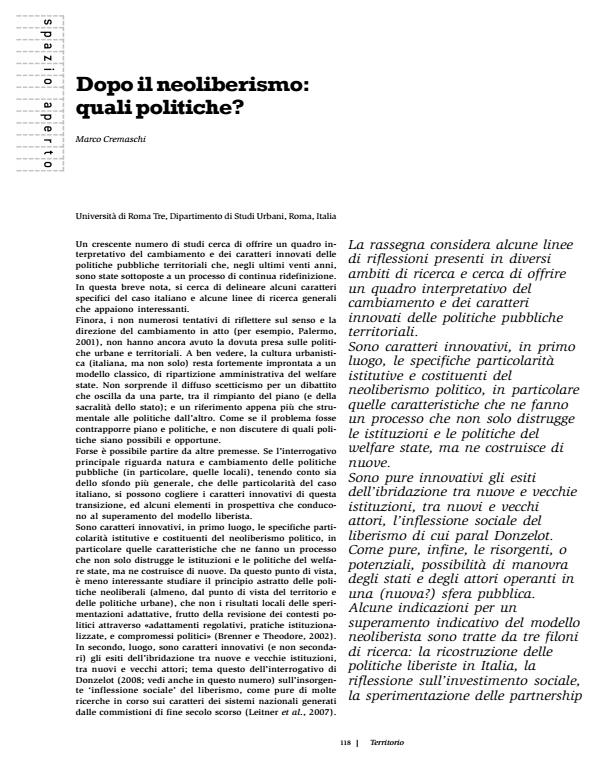Dopo il neoliberismo: quali politiche?
Titolo Rivista TERRITORIO
Autori/Curatori Marco Cremaschi
Anno di pubblicazione 2008 Fascicolo 2008/46
Lingua Italiano Numero pagine 5 P. 118-122 Dimensione file 202 KB
DOI
Il DOI è il codice a barre della proprietà intellettuale: per saperne di più
clicca qui
Qui sotto puoi vedere in anteprima la prima pagina di questo articolo.
Se questo articolo ti interessa, lo puoi acquistare (e scaricare in formato pdf) seguendo le facili indicazioni per acquistare il download credit. Acquista Download Credits per scaricare questo Articolo in formato PDF

FrancoAngeli è membro della Publishers International Linking Association, Inc (PILA)associazione indipendente e non profit per facilitare (attraverso i servizi tecnologici implementati da CrossRef.org) l’accesso degli studiosi ai contenuti digitali nelle pubblicazioni professionali e scientifiche
After neo-liberalism: which policies? - This review considers lines of thought followed in different areas of research and seeks to offer a framework for interpretation of change and innovation in public urban and regional policies. Innovative traits are seen firstly in the specifics which have formed and constitute political neoliberalism and more particularly in those characteristics which have made it a process which not only destroys welfare state institutions and policies, but which also constructs new ones. The outcomes of the hybridisation between new and old institutions and between new and old actors, the social inflection which Donzelot speaks of are also innovative. And finally, so are the reviving, or potential, possibilities of states and actors operating in a (new?) public sphere for manoeuvre. Some indications for indicatively going beyond the neoliberal model are taken from three lines of research: the reconstruction of liberal policies in Italy, thinking on social investment and the experimentation of partnerships.
Marco Cremaschi, Dopo il neoliberismo: quali politiche? in "TERRITORIO" 46/2008, pp 118-122, DOI: